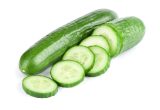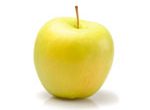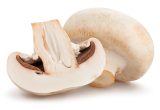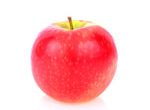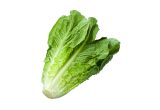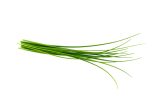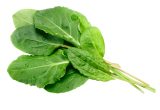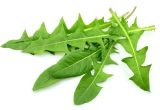Strawberry

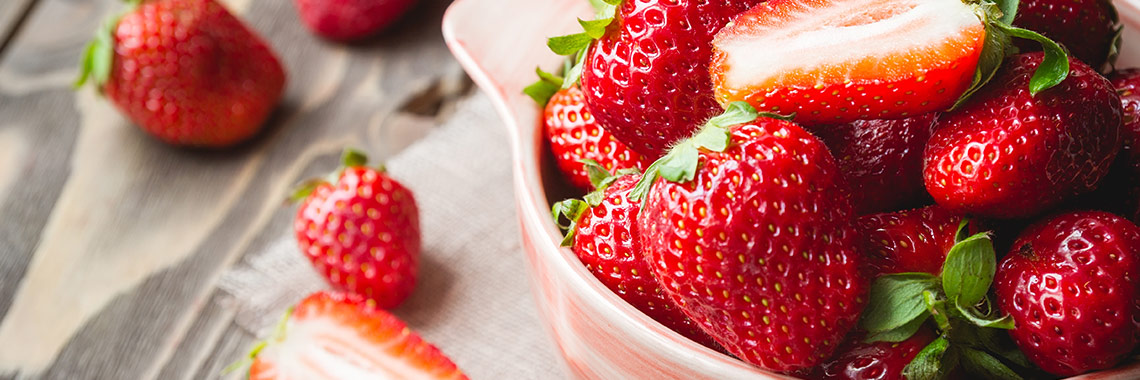
Description
- The strawberry (Fragaria x ananassa) belongs to the Rosaceae family.
- It is one of the most popular nutritious fruits among the berries (Mishra, 2014).
- It is cultivated in almost all countries of the world (Mishra, 2014).
PHYSICAL AND ORGANOLEPTIC CHARACTERISTICS
- Strawberry is a very attractive bright red coloured fruit, due to the presence of anthocyanins, the main one being pelargonidin-3-glucoside (Mishra, 2014).
- It is a non-climacteric fruit (Pech, 2018), whose colour changes during ripening from green-white to dark red in about 40 days after anthesis (Schwieterman, 2014).
- Strawberries are also characterised by their lack of firmness (Schwieterman, 2014). During ripening, the pH increases while the acidity and firmness of the fruit decreases (Ornelas-Paz, 2013).
- Their aroma consists mainly of a complex mixture of esters, aldehydes, alcohols and sulphur compounds (Mishra, 2014). To date, more than 350 volatile compounds have been identified in strawberries, but only a dozen contribute significantly to the aroma of this fruit, especially furaneol (4-hydroxy-2,5-dimethyl-3-(2H)-furanone) (Song, 2016; Yan, 2018).
- Esters, such as methyl and ethyl butanoates and hexanoates, are also thought to be important contributors to the aroma of this fruit (Mishra, 2014; Cruz-Rus, 2017).
- Linalool (monoterpenol) has been associated with a floral and sweet aroma while furanol while its methoxylated derivative mesifuran (2,5-dimethyl-4-methoxy-3 (2 H)-furanone) (furanones) is thought to be responsible for the fruity and caramel aromas. Other key compounds such as γ-decalactone and γ-dodecalactone, contributing to fresh peach aroma, have been associated with the perception of increased sweetness in strawberries (Cruz-Rus, 2017; Ulrich, 2016; Yan, 2018).
- However, there are differences in aroma among the multiple cultivars (Mishra, 2014).
- The ripening of strawberries leads to accumulation of several sugars and organic acids in addition to the volatile compounds that constitute their aroma (Ménager, 2004; Nunes, 2006; Kafkas, 2007; Schwieterman, 2014).
- The minor acidic note is due to the presence, to a greater or lesser degree, of organic acids, mainly citric and malic acids (Mikulic-Petkovsek, 2012). The main organic acids tend to increase irregularly during strawberry ripening (Ornelas-Paz, 2013).
COMPOSITION CHARACTERISTICS (excluding macronutrients, vitamins and minerals)
- A common denominator in the pathogenesis of most chronic inflammatory diseases is the involvement of oxidative stress, related to the production of ROS (Gasparrini, 2017). Several in vitro and in vivo studies have reported the effects of strawberry extracts on the suppression of oxidative stress and the inflammatory process. The polyphenols contained in strawberries are believed to be responsible for these beneficial properties (Battino, 2020).
- Epidemiological and clinical studies show that acute consumption appears to improve postprandial glycemic response. At the same time, prolonged intake is reported to improve plasma lipid profile, promoting cardiovascular health, especially in those at increased risk of metabolic syndrome (Forbes-Hernandez, 2016).
- To explain their beneficial effects, much attention has been paid in the past to the antioxidant properties of strawberry polyphenols. However, recent research has shown that their biological and functional activities are related not only to antioxidant capacity but also to the modulation of many cellular pathways involved in metabolism, survival, proliferation and antioxidant defences (Forbes-Hernandez, 2016).
- Generally speaking, phenolic acids (hydroxycinnamic and hydroxybenzoic acids) are in the majority in strawberries, followed by anthocyanins, flavonols and flavan-3-ols (Seeram, 2006; Kosińska, 2013; Nowicka, 2019).
- Among the phenolic acids, ellagic acid and coumaric acid derivatives are generally predominant. While pelargonidin-3-glucoside is the major anthocyanin in strawberry, the presence of cyanidin-3-glucoside and pelargonidin-3-acetylglucoside has also been reported (Bakker, 1994; Lopes-da-Silva, 2002).
- Other compounds usually include quercetin and kampferol derivatives (flavonols), as well as catechin and procyanidins (flavan-3-ols). The latter compounds may also be present in large amounts but in condensed form (proanthocyanidins) (Enomoto, 2019).
RAW
The following values are approximate and depend on variety, season, ripeness, cultivation conditions, etc.
Strawberries are low in energy* as they provide an average of 38.60 calories (kcal) per 100 g, i.e. 162 kJ.
According to the Ciqual 2020 table, strawberries are the second lowest calorie fruit after lemons.
COMPOSITION TABLES
For each nutrient, the tables provide information on the content, the minimum and maximum values and the percentage of the Dietary Reference Values (DRVs) per 100 g net of strawberries.
*Regulation (EC) No 1924/2006 of the European Parliament and of the Council of 20 December 2006 on nutrition and health claims made on foods.
MACRONUTRIENTS
Constituent
(g)
Average content
Min-Max
per 100g
DRV%
Water
90,30
87 - 92,60
-
Fibers
3,80
1,10 - NC
-
Carbohydrates
6,03
3,83 - 7,30
2,32
Sugars
5,60
4,57 - NC
6,22
Lipids
< 0,50
0,13 - 0,80
-
Saturated fat
< 0,01
NC - 0,066
-
Protein
0,63
0,10 - 1,25
1,26
Constituent
(g)
Amount
Min-Max
DRV%
Water
Ciqual 2020 (valeur issue des analyses Ciqual-Aprifel 2017)
-
-
Fibers
Ciqual 2020 (valeur issue des analyses Ciqual-Aprifel 2017)
-
-
Carbohydrates
Ciqual 2020
-
Règlement (UE) N°1169/2011 du parlement Européen et du conseil du 25 octobre 2011
Sugars
Ciqual 2020 (valeur issue des analyses Ciqual-Aprifel 2017)
-
Règlement (UE) N°1169/2011 du parlement Européen et du conseil du 25 octobre 2011
Lipids
Ciqual 2020 (valeur issue des analyses Ciqual-Aprifel 2017)
-
Règlement (UE) N°1169/2011 du parlement Européen et du conseil du 25 octobre 2011
Saturated fat
Ciqual 2020 (valeur issue des analyses Ciqual-Aprifel 2017)
-
Règlement (UE) N°1169/2011 du parlement Européen et du conseil du 25 octobre 2011
Protein
Ciqual 2020 (valeur issue des analyses Ciqual-Aprifel 2017)
-
Règlement (UE) N°1169/2011 du parlement Européen et du conseil du 25 octobre 2011
Zoom on carbohydrates
- The energy of strawberries comes mainly from their carbohydrates, at 6.03 g per 100 g.
- This amount is well below the average content in fresh fruit: about 11.31 g per 100 g.
- These carbohydrates are mainly fructose (3.30 g per 100 g) and glucose (2.30 g per 100 g).
Zoom on fibres
- Strawberries are a source of fibre* as they contain more than 3 g of fibre per 100 g, i.e. 3.80 g per 100 g.
- They contain more than the average content found in fresh fruit (2.77 g per 100 g).
Zoom on proteins
- The protein content of strawberries (0.63 g per 100 g) is lower than the average quantity found in fresh fruit: 0.93 g per 100 g.
Zoom on lipids
- Strawberries are fat-free* as they contain less than 0.5 g of fat per 100 g.
*Regulation (EC) No 1924/2006 of the European Parliament and of the Council of 20 December 2006 on nutrition and health claims made on foods.
MINERALS AND TRACE ELEMENTS
| Constituent | Average content |
Min-Max per 100g |
DRV% |
|---|---|---|---|
| Calcium (mg) | 18 | 8 - 31,60 | 2,25 |
| Chloride (mg) | < 20 | - | - |
| Copper (mg) | 0,02 | 0,013 - 0,15 | 2 |
| Iron (mg) | 0,19 | 0,11 - 0,80 | 1,36 |
| Iodine (µg) | < 20 | 0,05 - NC | - |
| Magnesium (mg) | 12 | 8 - 18 | 3,20 |
| Manganese (mg) | 0,26 | 0,14 - 0,75 | 13 |
| Phosphorus (mg) | 23 | 9 - 39 | 3,29 |
| Potassium (mg) | 140 | 77 - 344 | 7 |
| Selenium (µg) | < 20 | 0,20 - NC | - |
| Sodium (mg) | < 5 | 0 - NC | - |
| Zinc (mg) | 0,11 | 0,04 - 0,59 | 1,10 |
| Constituent | Amount | Min-Max | DRV% |
|---|---|---|---|
| Calcium (mg) | Ciqual 2020 (valeur issue des analyses Ciqual-Aprifel 2017) | - | Règlement (UE) N°1169/2011 du parlement Européen et du conseil du 25 octobre 2011 |
| Chloride (mg) | Ciqual 2020 (valeur issue des analyses Ciqual-Aprifel 2017) | - | Règlement (UE) N°1169/2011 du parlement Européen et du conseil du 25 octobre 2011 |
| Copper (mg) | Ciqual 2020 (valeur issue des analyses Ciqual-Aprifel 2017) | - | Règlement (UE) N°1169/2011 du parlement Européen et du conseil du 25 octobre 2011 |
| Iron (mg) | Ciqual 2020 (valeur issue des analyses Ciqual-Aprifel 2017) | - | Règlement (UE) N°1169/2011 du parlement Européen et du conseil du 25 octobre 2011 |
| Iodine (µg) | Ciqual 2020 (valeur issue des analyses Ciqual-Aprifel 2017) | - | Règlement (UE) N°1169/2011 du parlement Européen et du conseil du 25 octobre 2011 |
| Magnesium (mg) | Ciqual 2020 (valeur issue des analyses Ciqual-Aprifel 2017) | - | Règlement (UE) N°1169/2011 du parlement Européen et du conseil du 25 octobre 2011 |
| Manganese (mg) | Ciqual 2020 (valeur issue des analyses Ciqual-Aprifel 2017) | - | Règlement (UE) N°1169/2011 du parlement Européen et du conseil du 25 octobre 2011 |
| Phosphorus (mg) | Ciqual 2020 (valeur issue des analyses Ciqual-Aprifel 2017) | - | Règlement (UE) N°1169/2011 du parlement Européen et du conseil du 25 octobre 2011 |
| Potassium (mg) | Ciqual 2020 (valeur issue des analyses Ciqual-Aprifel 2017) | - | Règlement (UE) N°1169/2011 du parlement Européen et du conseil du 25 octobre 2011 |
| Selenium (µg) | Ciqual 2020 (valeur issue des analyses Ciqual-Aprifel 2017) | - | Règlement (UE) N°1169/2011 du parlement Européen et du conseil du 25 octobre 2011 |
| Sodium (mg) | Ciqual 2020 (valeur issue des analyses Ciqual-Aprifel 2017) | - | - |
| Zinc (mg) | Ciqual 2020 (valeur issue des analyses Ciqual-Aprifel 2017) | - | Règlement (UE) N°1169/2011 du parlement Européen et du conseil du 25 octobre 2011 |
Zoom on minerals and trace elements
- Strawberries contain a significant amount of manganese equivalent to 13% of DRVs, i.e. 0.26 mg per 100 g.
- The other minerals and trace elements are present in quantities representing less than 8% of DRVs.
VITAMINS
| Constituent | Average content |
Min-Max per 100g |
DRV% |
|---|---|---|---|
| Provitamin A Beta-carotene (µg) | < 5 | 3 - 12 | - |
| Vitamin A equivalent (µg) | < 0,83 | 0,50 - 2 | - |
| Vitamin B1 (mg) | < 0,015 | 0,007 - 0,044 | - |
| Vitamin B2 (mg) | < 0,01 | 0,007 - 0,05 | - |
| Vitamin B3 (mg) | 0,21 | 0,19 - 1,11 | 1,31 |
| Vitamin B5 (mg) | 0,13 | 0,071 - 0,34 | 2,17 |
| Vitamin B6 (mg) | 0,04 | 0,026 - 0,08 | 2,86 |
| Vitamin B9 (µg) | 98,9 | 19 - 133 | 49,45 |
| Vitamin C (mg) | 54 | 52,50 - 76 | 67,50 |
| Vitamin E (mg) | 0,30 | 0,19 - 0,48 | 2,50 |
| Vitamin K1 (µg) | < 0,80 | NC - 20 | - |
| Constituent | Amount | Min-Max | DRV% |
|---|---|---|---|
| Provitamin A Beta-carotene (µg) | Ciqual 2020 (valeur issue des analyses Ciqual-Aprifel 2017) | - | - |
| Vitamin A equivalent (µg) | Calcul à partir de la valeur Provitamine A Béta-carotène* | - | Règlement (UE) N°1169/2011 du parlement Européen et du conseil du 25 octobre 2011 |
| Vitamin B1 (mg) | Ciqual 2020 (valeur issue des analyses Ciqual-Aprifel 2017) | - | Règlement (UE) N°1169/2011 du parlement Européen et du conseil du 25 octobre 2011 |
| Vitamin B2 (mg) | Ciqual 2020 (valeur issue des analyses Ciqual-Aprifel 2017) | - | Règlement (UE) N°1169/2011 du parlement Européen et du conseil du 25 octobre 2011 |
| Vitamin B3 (mg) | Ciqual 2020 (valeur issue des analyses Ciqual-Aprifel 2017) | - | Règlement (UE) N°1169/2011 du parlement Européen et du conseil du 25 octobre 2011 |
| Vitamin B5 (mg) | Ciqual 2020 (valeur issue des analyses Ciqual-Aprifel 2017) | - | Règlement (UE) N°1169/2011 du parlement Européen et du conseil du 25 octobre 2011 |
| Vitamin B6 (mg) | Ciqual 2020 (valeur issue des analyses Ciqual-Aprifel 2017) | - | Règlement (UE) N°1169/2011 du parlement Européen et du conseil du 25 octobre 2011 |
| Vitamin B9 (µg) | Ciqual 2020 (valeur issue des analyses Ciqual-Aprifel 2017) | - | Règlement (UE) N°1169/2011 du parlement Européen et du conseil du 25 octobre 2011 |
| Vitamin C (mg) | Ciqual 2020 (valeur issue des analyses Ciqual-Aprifel 2017) | - | Règlement (UE) N°1169/2011 du parlement Européen et du conseil du 25 octobre 2011 |
| Vitamin E (mg) | Ciqual 2020 (valeur issue des analyses Ciqual-Aprifel 2017) | - | Règlement (UE) N°1169/2011 du parlement Européen et du conseil du 25 octobre 2011 |
| Vitamin K1 (µg) | Ciqual 2020 (valeur issue des analyses Ciqual-Aprifel 2017) | - | Règlement (UE) N°1169/2011 du parlement Européen et du conseil du 25 octobre 2011 |
Zoom on vitamins
- Strawberries are high in:
- vitamin C, as they provide the equivalent of 67.50% of DRVs, i.e. 54 mg per 100 g;
- vitamin B9, as they provide the equivalent of 49.45% of DRVs, i.e. 98.90 µg per 100 g. According to the Ciqual 2020 table, strawberries are the fruit with the highest vitamin B9 content after passion fruit.
- The other vitamins are present in quantities representing less than 3% of DRVs.
*Calculation made: Beta Carotene / 6 + retinol
POLYPHENOLS
| Constituent (mg) | Average content |
Min-Max per 100mg |
|---|---|---|
| Flavonoids (mg) | 47,43 | - |
| of which Flavonols (mg) | 3,99 | - |
| of which Flavanols (mg) | 18,48 | - |
| of which Anthocyanins (mg) | 24,95 | - |
| Phenolic Acids (mg) | 2,44 | - |
| of which Hydroxybenzoic acids (mg) | 1,04 | - |
| of which Hydroxycinnamic acids (mg) | 1,40 | - |
| Total polyphenols | 49,87 | - |
| Constituent (mg) | Amount | Min-Max |
|---|---|---|
| Flavonoids | Etude CTIFL-Aprifel 2017-2018 Méthode utilisée : Chromatographie | - |
| of which Flavonols | Etude CTIFL-Aprifel 2017-2018 Méthode utilisée : Chromatographie | - |
| of which Flavanols | Etude CTIFL-Aprifel 2017-2018 Méthode utilisée : Chromatographie | - |
| of which Anthocyanins | Etude CTIFL-Aprifel 2017-2018 Méthode utilisée : Chromatographie | - |
| Phenolic Acids | Etude CTIFL-Aprifel 2017-2018 Méthode utilisée : Chromatographie | - |
| of which Hydroxybenzoic acids | Etude CTIFL-Aprifel 2017-2018 Méthode utilisée : Chromatographie | - |
| of which Hydroxycinnamic acids | Etude CTIFL-Aprifel 2017-2018 Méthode utilisée : Chromatographie | - |
| Total polyphenols | Etude CTIFL-Aprifel 2017-2018 Méthode utilisée : Chromatographie | - |
Zoom on polyphenols
- Polyphenols are substances with an antioxidant effect.
- Strawberries present a notable quantity of polyphenols constituted with 95% of flavonoids.
- The polyphenols most present in strawberries are anthocyanins (50% of total polyphenols), followed closely by flavanols (37% of total polyphenols).
Nutrition and health claims
According to the definitions of nutrition claims as set out in Regulation (EC) No 1924/2006 on nutrition and health claims, and in view of the composition of strawberries, the following claims may be used:
NUTRITION CLAIMS OF STRAWBERRIES
- Low in energy (100 g of strawberries provide less than 40 kcal)
- High in vitamin C (100 g of strawberries provide the equivalent of more than 30% of DRVs)
- High in vitamin B9 (100 g of strawberries provide the equivalent of more than 30% of DRVs)
- Source of fibre (100 g of strawberries provide more than 3 g of fibre).
- Fat-free (100 g of strawberries contain less than 0.5 g of fat)
HEALTH CLAIMS (for a consumption of 100 g of strawberries)
Vitamin C
- Vitamin C contributes to:
- normal function of the immune system during and after intense physical exercise,
- normal collagen formation for the normal function of blood vessels,
- normal collagen formation for the normal function of bones,
- normal collagen formation for the normal function of cartilage,
- normal collagen formation for the normal function of gums,
- normal collagen formation for the normal function of skin,
- normal collagen formation for the normal function of teeth,
- normal energy-yielding metabolism,
- normal functioning of the nervous system,
- normal psychological function,
- normal function of the immune system,
- protection of cells from oxidative stress,
- reduction of tiredness and fatigue,
- regeneration of the reduced form of vitamin E.
- Vitamin C increases iron absorption.
Folates or vitamin B9
- Folates contribute to:
- maternal tissue growth during pregnancy,
- normal amino acid synthesis,
- normal blood formation,
- normal homocysteine metabolism,
- normal psychological function,
- normal function of the immune system,
- reduction of tiredness and fatigue.
- Folates have a role in the process of cell division.
References
- Afssa, 2002. Les fibres alimentaires : définitions, méthodes de dosage, allégations nutritionnelles
- Mikulic-Petkovsek M1, Schmitzer V, Slatnar A, Stampar F, Veberic R. Composition of sugars, organic acids, and total phenolics in 25 wild or cultivated berry species. J Food Sci. 2012 Oct;77(10):C1064-70.
- Mishra R, Kar A. Effect of storage on the physicochemical and flavour attributes of two cultivars of strawberry cultivated in northern India. ScientificWorldJournal. 2014 Jan 23;2014:794926.
- Neveu V, Perez-Jiménez J, Vos F, Crespy V, du Chaffaut L, Mennen L, Knox C, Eisner R, Cruz J, Wishart D, Scalbert A. (2010) Phenol-Explorer: an online comprehensive database on polyphenol contents in foods. Database, doi: 10.1093/database/bap024. Full text (free access)
- Ornelas-Paz Jde J1, Yahia EM, Ramírez-Bustamante N, Pérez-Martínez JD, Escalante-Minakata Mdel P, Ibarra-Junquera V, Acosta-Muñiz C, Guerrero-Prieto V, Ochoa-Reyes E. Physical attributes and chemical composition of organic strawberry fruit (Fragaria x ananassa Duch, Cv. Albion) at six stages of ripening. Food Chem. 2013 May 1;138(1):372-81.
- Règlement (UE) n°1169/2011 du Parlement européen et du Conseil du 25 octobre 2011 concernant l’information des consommateurs sur les denrées alimentaires, modifiant les règlements (CE) n°1924/2006 et (CE) n°1925/2006 du Parlement européen et de Conseil et abrogeant la directive 87/250/CEE de la Commission, la directive 90/496/CEE du Conseil, la directive 1999/10/CE de la Commission, la directive 200/13/CE du Parlement européen et du Conseil, les directives 2002/67/CE et 2008/5/CE de la Commission et le règlement (CE) n°608/2004 de la Commission.
- Règlement (UE) N°432/2012 de la Commission du 16 mai 2012 établissant une liste des allégations de santé autorisées portant sur les denrées alimentaires, autres que celles faisant référence à la réduction du risque de maladie ainsi qu’au développement et à la santé infantiles.
- Règlement (CE) N° 1924/2006 du Parlement européen et du Conseil du 20 décembre 2006 concernant les allégations nutritionnelles et de santé portant sur les denrées alimentaires.
- Rothwell JA, Urpi-Sarda M, Boto-Ordoñez M, Knox C, Llorach R, Eisner R, Cruz J, Neveu V, Wishart D, Manach C, Andres-Lacueva C, Scalbert A. (2012) Phenol-Explorer 2.0: a major update of the Phenol-Explorer database integrating data on polyphenol metabolism and pharmacokinetics in humans and experimental animals. Database, doi: 10.1093/database/bas031. Full text (free access)
- Rothwell JA, Pérez-Jiménez J, Neveu V, Medina-Ramon A, M’Hiri N, Garcia Lobato P, Manach C, Knox K, Eisner R, Wishart D, Scalbert A. (2013) Phenol-Explorer 3.0: a major update of the Phenol-Explorer database to incorporate data on the effects of food processing on polyphenol content. Database, 10.1093/database/bat070. Full text (free access)
- Schwieterman ML1, Colquhoun TA2, Jaworski EA3, Bartoshuk LM4, Gilbert JL5, Tieman DM5, Odabasi AZ6, Moskowitz HR7, Folta KM8, Klee HJ8, Sims CA6, Whitaker VM9, Clark DG2. Strawberry flavor: diverse chemical compositions, a seasonal influence, and effects on sensory perception. PLoS One. 2014 Feb 11;9(2):e88446.
- Table de composition nutritionnelle des aliments CIQUAL (2017) – via le site internet www.anses.fr, consultée le 15/12/2017.




